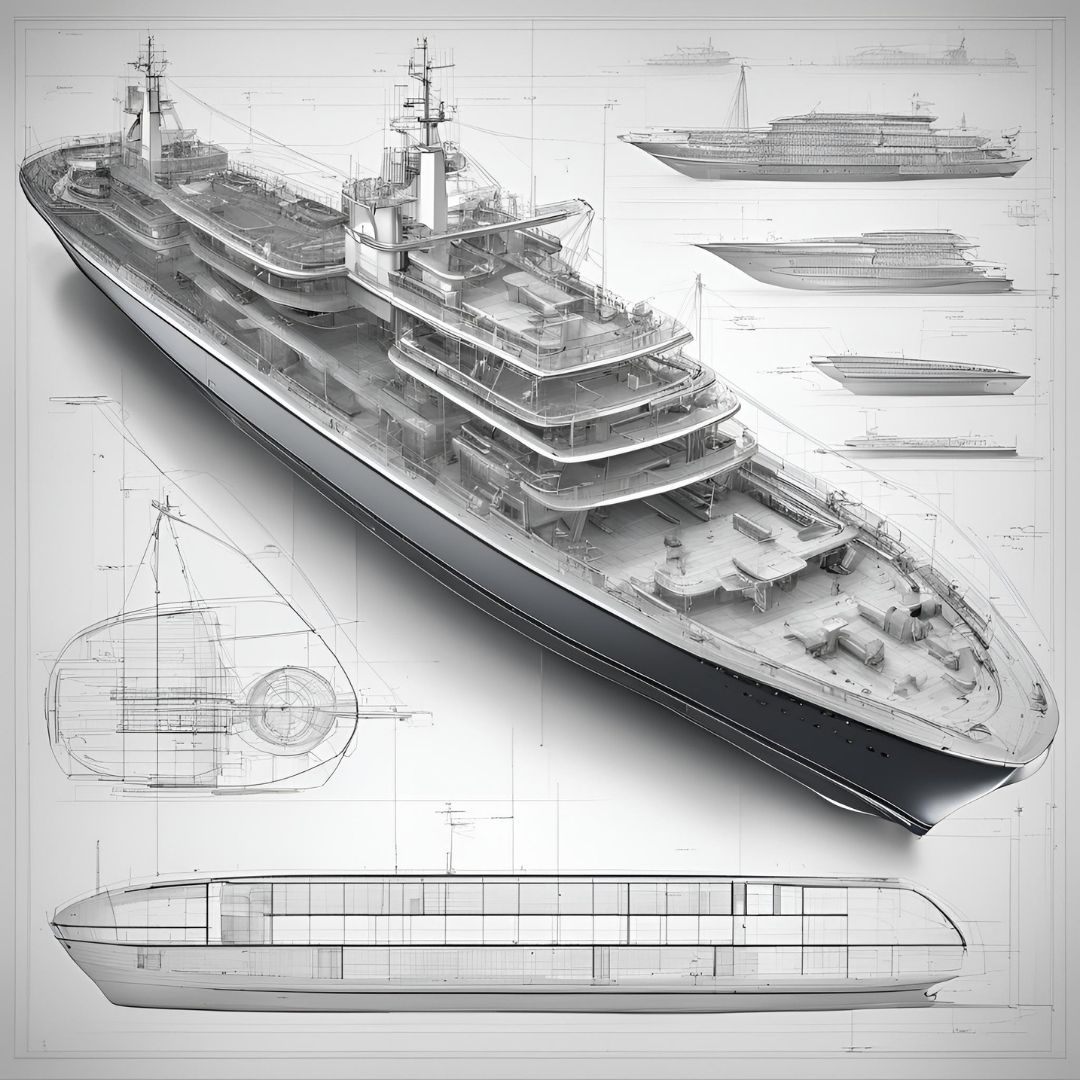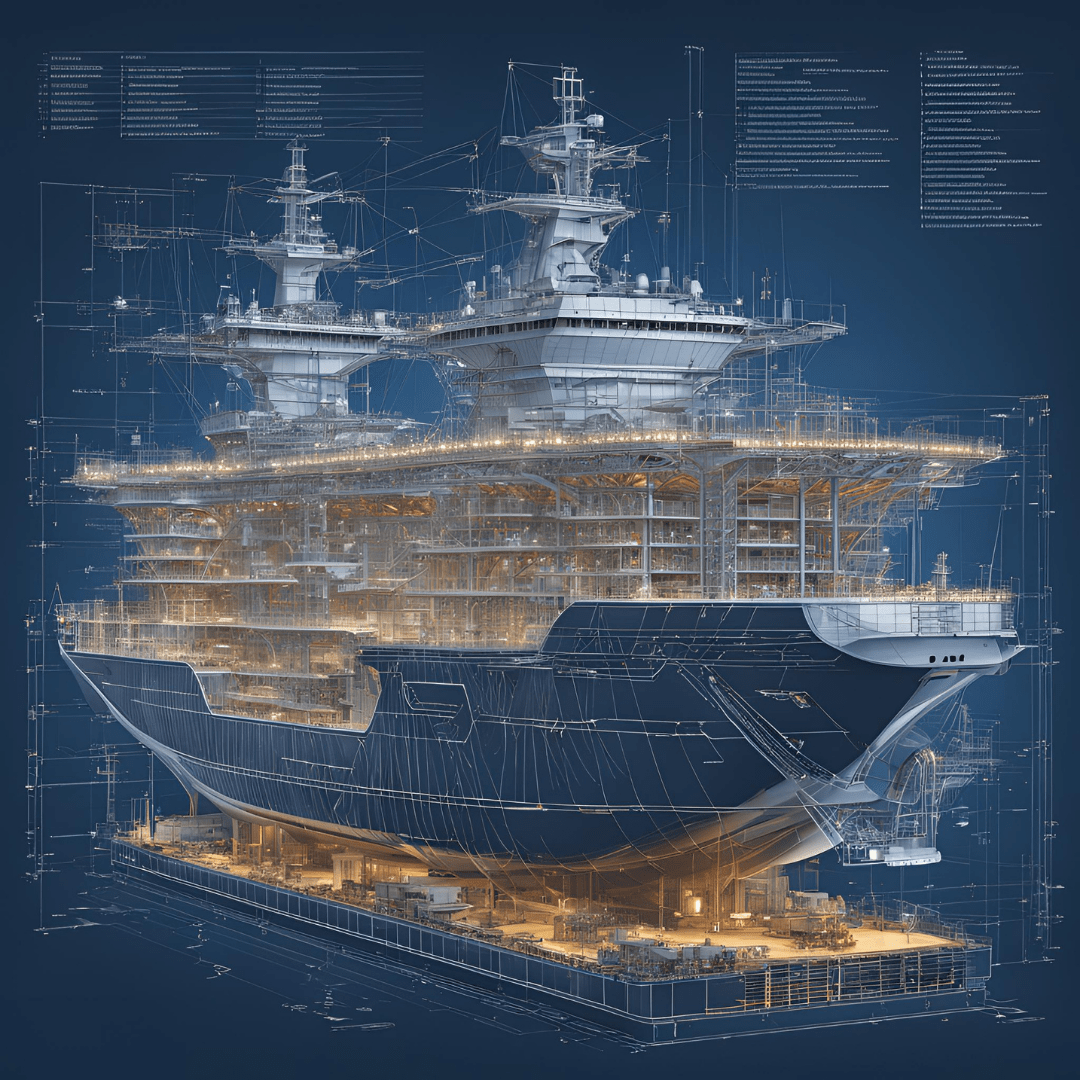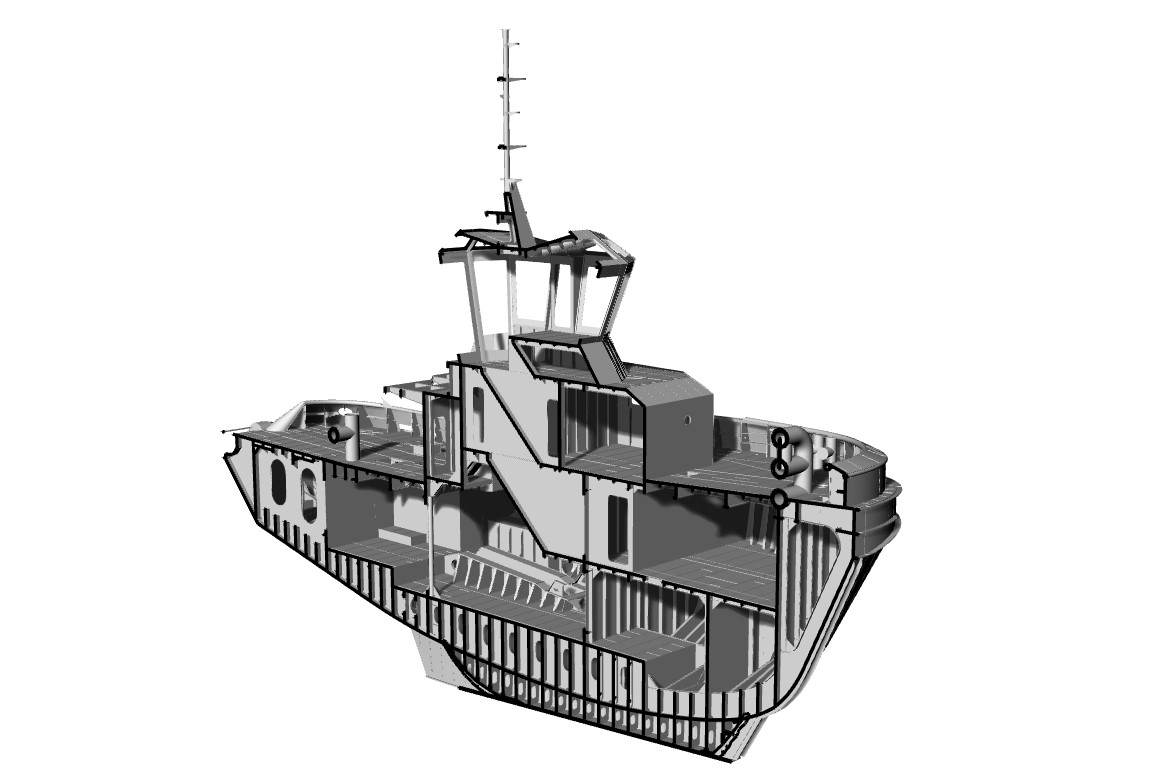Initial Design
The initial design phase is the starting point of any ship design project. This stage focuses on defining the vessel's general characteristics and objectives. During the initial design stage, key elements are identified, such as the ship's size, purpose, intended operational environment, and capacity. Preliminary calculations and evaluations are conducted to determine the approximate dimensions, draft, displacement, and propulsion system requirements.
- Preliminary GA
- Preliminary Specification
- Lightweight Estimation
- Cost Estimation
- Preliminary Material List
- Strength and Scantling Calculations


Basic Design
The basic design stage delves deeper into the technical aspects of the ship's design. It involves a more complex analysis of the preliminary concepts developed during the initial design phase. The objective of the basic design is to provide a comprehensive understanding of the ship's structure, systems, and equipment. In this stage, detailed calculations and analyses are performed to determine the ship's structural integrity, stability, hydrodynamic performance, and resistance to wave loads. The main focus is on developing a reliable and efficient design that meets the operational requirements and is compliant with industry and regulatory standards.
- Building Specification
- General Arrangement
- 3D Shell & Lines Modelling
- Power Estimation & Engine Selection
- Main Construction Drawings
- Noise and Vibration Analysis
- Tank Capacity Plan
- P&ID’s
Detail Design
In the detail design stage, the ship's design is refined to a level where every aspect is thoroughly analyzed, specified, and documented. This stage focuses on developing construction drawings, optimizing the design, and finalizing all technical details. During the detail design phase, architects work closely with engineers, suppliers, and contractors to ensure the manufacturability and cost- effectiveness of the design. Efforts are made to reduce weight, enhance efficiency, and improve safety features. The various systems, such as electrical, HVAC, and piping, are intricately planned and integrated into the ship's structure.
- 3D Hull Model
- Workshop Drawings
- Cutting Information (NC files)
- Production Sketches (Bending plates, HP bending sketches, HP cutting sketches, shell plate template sketches, etc.)
- Production Documents (Part list-HP list, etc.)
- Material List and Weight Estimate
- Assembly sketches
